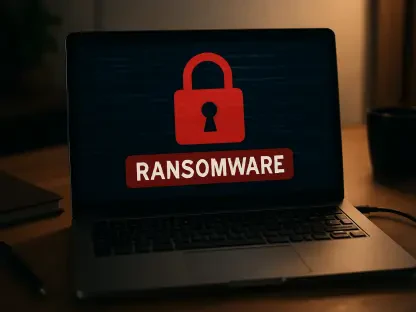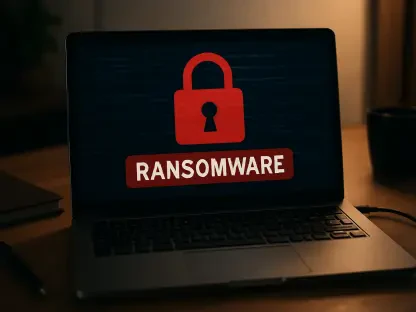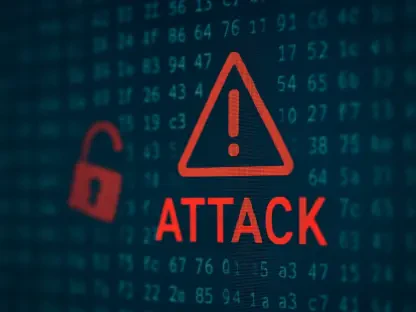Unveiling SLH: A New Era in Cybercrime Collaboration
In an era where digital threats evolve at an alarming pace, the emergence of Scattered LAPSUS$ Hunters (SLH) marks a seismic shift in the cybercriminal underworld, as three infamous groups—Scattered Spider, LAPSUS$, and ShinyHunters—have united under a single banner to form a powerful collective. This merger signals a departure from the isolated operations of the past, creating a federated entity with combined expertise and resources that amplify their destructive potential. The alliance stands as a stark reminder of how collaboration can redefine the scale of cyber threats facing organizations globally.
This unprecedented consolidation introduces a new dynamic to the cybercrime landscape, blending distinct tactics and reputations into a singular, formidable force. Key questions arise from this development: How does such a merger enhance their ability to execute sophisticated attacks? What unique challenges does it pose to existing cybersecurity defenses? These concerns drive the need to understand the implications of this union.
The focus of this analysis lies in dissecting SLH’s operational strategies, their public engagement methods, network affiliations, and the emerging threats they pose, including the potential development of ransomware. By examining these elements, a clearer picture emerges of how this alliance reshapes the fight against digital crime and underscores the urgency for adaptive security measures.
The Rise of SLH: Context and Importance
Before their unification, Scattered Spider, LAPSUS$, and ShinyHunters each carved out notorious reputations through distinct approaches to cybercrime. Scattered Spider was known for intricate social engineering schemes, LAPSUS$ gained infamy for high-profile data breaches with a flair for publicity, and ShinyHunters specialized in massive data leaks, often targeting sensitive corporate information. Their individual track records already posed significant risks, but their combined capabilities signal an escalated threat.
The formation of SLH within the broader cybercrime ecosystem, particularly as a key player in The Com network—a loosely connected federation of threat actors—marks a pivotal moment. This consolidation enhances their operational reach, allowing for shared resources and expertise that magnify the sophistication and frequency of attacks. Positioned within this network, SLH exemplifies a trend toward collaborative crime that challenges the traditional silos of underground operations.
The societal impact of this development cannot be overstated, as it heightens risks to organizations across sectors, from financial institutions to tech giants. Law enforcement faces mounting difficulties in tracking and disrupting such decentralized, collaborative entities, while cybersecurity professionals grapple with defending against a more coordinated adversary. This merger underscores the need for innovative strategies to counter an evolving enemy that thrives on unity and adaptability.
Research Methodology, Findings, and Implications
Methodology
To understand the scope of SLH’s operations, data was gathered from credible cybersecurity sources, including insights provided by Trustwave SpiderLabs and Acronis. These entities offered detailed perspectives on the group’s activities, drawing from real-time monitoring and historical attack patterns. The analysis relied on a combination of primary observations and secondary reports to build a comprehensive profile of this new threat actor.
The analytical approach involved a deep dive into SLH’s public-facing activities, particularly their Telegram presence, alongside an examination of their operational models and affiliations with other cybercrime groups. Patterns of communication, branding, and coordination were studied to assess their strategic intent. Additionally, their extortion frameworks and potential ransomware initiatives were scrutinized to gauge future risks.
Specialized tools and techniques facilitated the study of SLH’s tactics, such as social engineering methods and the structure of their Extortion-as-a-Service (EaaS) model. By mapping their interactions within broader networks and analyzing hints of malware development, a clearer understanding of their capabilities was achieved. This methodology ensured a robust foundation for evaluating the group’s impact on the digital threat landscape.
Findings
A significant discovery centers on SLH’s rapid establishment of a digital presence, with at least 16 Telegram channels created since August 8 of this year for coordination and visibility. Despite frequent takedowns by platform moderators, the group’s persistence in recreating these channels under slightly altered names demonstrates a commitment to maintaining a public profile. These platforms serve as critical hubs for disseminating messages and marketing their illicit services.
Another key finding highlights SLH’s adoption of an EaaS model, which allows affiliates to conduct extortion campaigns under the group’s notorious brand for a fee. This framework effectively democratizes access to high-impact cybercrime tools, enabling smaller actors to target organizations with enhanced credibility. Such a model significantly broadens the scope of potential attacks facilitated by SLH’s reputation.
Further insights reveal deep affiliations within The Com network, alongside connections to groups like DragonForce, and indications of a custom ransomware family dubbed S#nySp1d3r. The blend of financial motivations with hacktivist-style behaviors also emerged as a defining trait, with operations driven by both profit and a desire for attention. These dual motives shape their unique approach, combining theatrical branding with calculated criminal activity.
Implications
The collaborative model adopted by SLH lowers entry barriers for smaller cybercriminals, effectively expanding the overall threat landscape. By allowing affiliates to operate under a well-known banner, the group amplifies the reach of extortion schemes, posing a persistent challenge to organizational security. This structure suggests a future where even less-skilled actors can leverage established reputations for significant impact.
Hints of ransomware development, particularly the potential S#nySp1d3r strain, signal a possible shift toward more destructive tactics. Should this materialize, organizations could face heightened risks of data encryption and prolonged downtime, necessitating stronger preventive measures. The uncertainty around deployment timelines adds urgency to preparing for such eventualities.
The hybrid motives of profit and social validation complicate traditional defense mechanisms, as SLH’s actions are not solely predictable through financial lenses. This duality challenges cybersecurity policies to adapt to non-conventional threat actors, while also highlighting the need for international cooperation to combat federated cybercrime groups. Addressing these implications requires a rethinking of global strategies to disrupt such alliances effectively.
Reflection and Future Directions
Reflection
Analyzing an entity as fluid and decentralized as SLH presents inherent complexities, particularly in tracking their Telegram presence amid constant takedowns. The ephemeral nature of their digital footprint makes it difficult to maintain a consistent view of their activities. This fluidity underscores the challenge of studying groups that operate with both technical and perceptual agility.
Limitations also exist in predicting the trajectory of SLH’s ransomware ambitions, given the lack of concrete evidence regarding deployment. While hints of development are evident, the absence of confirmed attacks restricts definitive conclusions. This gap in actionable intelligence hampers the ability to fully anticipate their next moves.
Expanding the scope of research could have provided additional depth, particularly by incorporating direct perspectives from victims or detailed responses from law enforcement. Such viewpoints might offer richer context on the real-world impact of SLH’s operations. Future studies should aim to bridge these gaps to present a more holistic understanding of the threat.
Future Directions
Research into the long-term effects of SLH’s EaaS model on smaller cybercrime actors remains a critical area for exploration. Understanding how this framework influences the proliferation of threats could inform strategies to disrupt affiliate networks. This line of inquiry holds potential for mitigating the spread of branded extortion campaigns.
Another avenue involves assessing the effectiveness of platform moderation, such as on Telegram, in curbing the activities of groups like SLH. Evaluating how takedowns and policy enforcement impact operational continuity could guide tech companies in refining their approaches. Such studies might reveal actionable ways to hinder visibility and coordination.
Investigating SLH’s potential ransomware deployment, particularly its competitive positioning against established strains like LockBit, is also essential. Additionally, exploring evolving alliances within The Com network could help anticipate future mergers or cartels. These efforts are vital for staying ahead of collaborative trends that redefine cyber threats.
SLH’s Legacy: Redefining Cyber Threats
SLH stands as a transformative force in cybercrime, embodying a paradigm shift through strategic mergers, brand-sharing, and hybrid motivations that blend profit with publicity. Their role within The Com network, coupled with affiliations like those with DragonForce, illustrates a sophisticated web of collaboration that amplifies their impact. This collective redefines how threats are orchestrated in the digital realm.
Their use of Telegram for propaganda and coordination, alongside innovative models like EaaS, highlights a deliberate fusion of operational efficiency and public perception. These strategies position SLH as a multifaceted adversary, capable of adapting to countermeasures with resilience. Their approach sets a precedent for how cybercrime groups might evolve through unity.
Ultimately, SLH’s emergence signals a growing trend of collaborative cybercrime, demanding urgent and adaptive responses from the cybersecurity community. Their legacy lies in challenging conventional defenses, pushing for a reevaluation of how threats are understood and countered. Addressing this evolution remains a pressing priority for safeguarding digital ecosystems.
Final Thoughts
Looking back, the analysis of SLH uncovered a complex web of collaboration that reshaped the understanding of cyber threats. Their merger proved to be a catalyst for heightened sophistication in attacks, challenging defenders at every turn. The insights gained underscored the urgency of addressing federated crime structures.
Moving forward, actionable steps must include fostering international partnerships to disrupt networks like The Com, while investing in advanced threat intelligence to track fluid entities. Cybersecurity frameworks should evolve to counter hybrid motives, blending technical defenses with psychological insights. Additionally, collaboration with tech platforms could enhance moderation efforts to limit the visibility of such groups.
Beyond immediate responses, the focus should shift to preempting future alliances by studying emerging trends in cybercrime cartelization. Building resilience against EaaS models and potential ransomware threats will be paramount. These considerations offer a roadmap for navigating the challenges posed by collectives like SLH in the years ahead.









